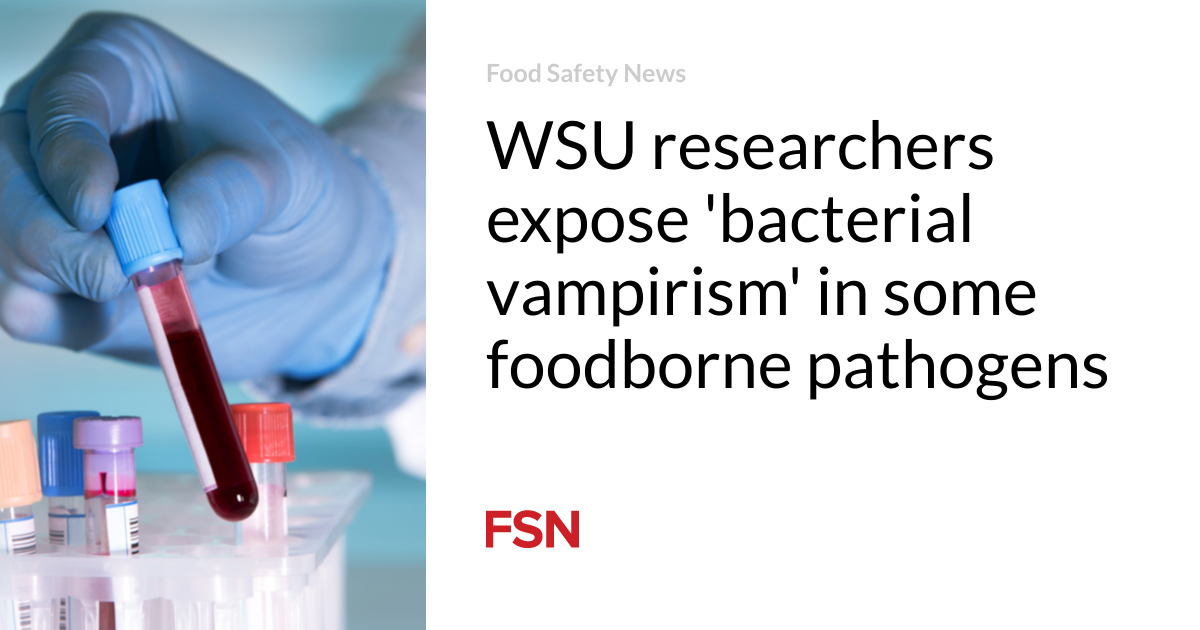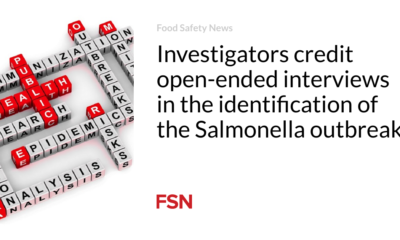Food
WSU researchers uncover ‘bacterial vampirism’ in some foodborne pathogens

Scientists at Washington State University (WSU) have discovered a surprising behavior in some of the world’s deadliest bacteria: they are attracted to human blood, a phenomenon they call “bacterial vampirism.”
A recent study published in the journal eLife led by WSU researchers shows that certain bacteria, including some foodborne bacteria, have a strong affinity for the liquid component of blood known as serum, which contains essential nutrients for their sustenance. Among the chemicals in the blood that these bacteria are particularly attracted to is serine, an amino acid that is abundant in human blood and also commonly found in protein drinks.
The research, led by WSU’s College of Veterinary Medicine, looks at how bloodstream infections occur and offers possible treatment options. Arden Baylink, professor at WSU and corresponding author of the study, emphasized the seriousness of bloodstream infections, which can be fatal. “We learned that some of the bacteria that commonly cause bloodstream infections actually sense a chemical in human blood and swim toward it,” Baylink says.
The study found that three types of bacteria – Salmonella enterica, Escherichia coli and Citrobacter koseri – are attracted to human serum. These bacteria are known culprits behind bloodstream infections, especially in individuals with inflammatory bowel disease (IBD) who often experience intestinal bleeding, which provides entry points for bacterial invasion into the bloodstream.
Using an innovative microscope system called the Chemosensory Injection Rig Assay, the researchers simulated intestinal bleeding by introducing small amounts of human serum and observed the rapid response of disease-causing bacteria as they settled on the serum source within minutes.
Further research revealed that Salmonella possesses a specific protein receptor called Tsr, which allows it to sense and navigate to serum. Using protein crystallography, the researchers closely examined the molecular interactions between the bacterial protein receptor and serine, pinpointing serine as a key chemical signal from blood that bacteria detect and consume.
Siena Glenn, lead author of the study and a Ph.D. student at WSU, highlighted the potential implications of their findings for developing new therapeutic strategies.
“By learning how these bacteria can detect blood sources, we can develop new drugs in the future that block this ability,” says Glenn.
Contributors to the research include scientists from the University of Oregon and WSU, with funding from WSU and the National Institute of Allergy and Infectious Diseases.
The discovery of what the researchers call ‘bacterial vampirism’ represents a significant advance in understanding the behavior and mechanisms underlying bloodstream infections, opening doors for targeted interventions to combat these deadly pathogens.
The full study can be found here.
(To sign up for a free subscription to Food Safety News, click here.)













